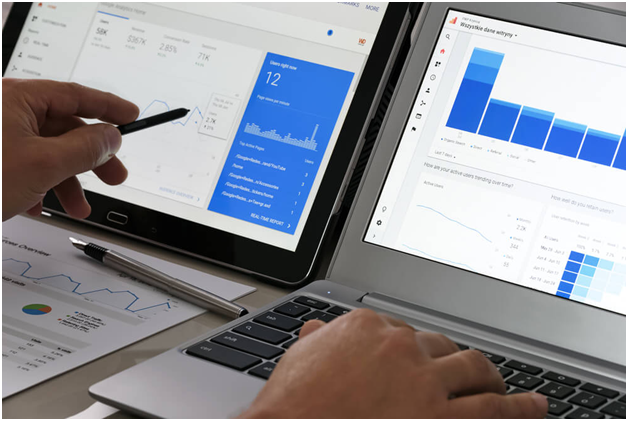Social media platforms provide small businesses an opportunity to reach potential customers and boost brand awareness without spending big marketing budgets. With over 4 billion social media users worldwide, platforms like Facebook, Instagram, and Twitter offer invaluable exposure at little to no cost.
Implementing a strategic and consistent social media presence can help small businesses build meaningful connections, drive website traffic, generate leads, and ultimately boost sales. Here, we will discuss some effective social media marketing services for small businesses to maximize results without overextending limited resources.
Some effective social media marketing services for small businesses
- Develop Buyer Personas
The first step to an effective social strategy is understanding your ideal customers. Small businesses should develop comprehensive buyer personas – fictional representations of target customers based on market research and real data.
Well-defined personas help shape content that resonates with ideal customers. Personas typically include demographic, geographic, behavioral, and psychographic information. They guide decisions from platform choice to content creation tailored for each audience segment.
- Choose the Right Platforms
With limited marketing resources, small businesses must strategically select social platforms that reach intended audiences.
For example, Instagram now boasts over 1 billion active monthly users who skew toward youthful demographics, making it ideal for brands targeting younger crowds. Similarly, LinkedIn caters to a professional audience, while Pinterest drives inspiration from hobbyists.
Conduct market research, consult data analytics, and track engagement metrics to determine where ideal customers are most active online. Allocate efforts accordingly.
- Create Shareworthy Content
Content reigns supreme on social media. To organically build an audience and drive traffic, small business pages must share relevant, valuable content consistently.
Curate a content calendar aligned to buyer personas across multiple platforms. Blog posts and short-form social copy should solve target audience problems and engage readers by evoking emotion.
Eye-catching visuals and videos boost content shareability dramatically, as do interactive polls and contests. Measure what performs best and produce more of that high-value content.
- Strategize Paid Ads
Organic social strategies play the long game, slowly garnering followers to build brand awareness and trust. Small businesses can accelerate results with strategic paid social campaigns while budgets allow.
Highly targeted Facebook/Instagram ads, for example, help raise brand visibility and engagement quickly. Retargeting ads keep businesses top-of-mind with previous site visitors. For small spenders aiming for trackable conversions, platforms like Twitter provide pay-per-click ads.
Test small batches of paid content across networks, optimizing based on performance data, to stretch dollars. Schedule campaigns to align with peak shopping periods or upcoming product launches.
- Track Performance Metrics
Data should drive every smart digital strategy. Proper analytics tools help small businesses identify high-performing platforms and content for optimal resource allocation.
Track engagement metrics like reach, clicks, and shares. Follow website traffic referred from social channels. Measure lead generation and sales influenced by social efforts.
Dig into metrics to see follower demographics and their interests to further refine content. Continually optimize efforts toward your best customer engagement and conversion metrics.
- Provide Social Customer Service
Consumers expect brands to provide customer service via social channels just as they offer phone and email options. Platforms like Facebook and Twitter have become preferred communication channels, especially for digital-savvy millennial and Gen Z demographics.
Small businesses should monitor conversations happening around their brand names and interact promptly. Social listening helps identify happy and disgruntled customers to guide customer service efforts.
Quick, personalized responses to questions, complaints, and feedback strengthen consumer connections that cultivate brand loyalty and improve reputation. Assign community management roles to remain responsive across channels.
Integrate Social Media with Other Marketing
For the greatest combined impact across touchpoints, integrate social efforts with other marketing channels like email, website, and print.
Email newsletters and promotions should feature social sharing tags and links back to social profiles. Display recent social posts and engagement icons directly on websites to boost visitors. Print materials like business cards can list social handles alongside phone, email, and address.
This cross-channel promotion reinforces branding cohesion while enabling customers seamless access to social profiles from every contact avenue. Rather than standalone efforts, this integrated methodology leverages multiple assets to raise awareness and drive social traffic continually from all directions.
Further, share website blogs and landing pages via social posts and ads to take readers from casual content scroll to sales funnel top, expanding social’s role from brand exposure to lead conversion. Along each path, collect email addresses for customer retention outside social platforms.
Conclusion
A strategic, consistent social media optimization agency approach helps small businesses punch above their weight class amid bigger brands with expansive digital marketing budgets.
Define target buyer personas. Identify key customer platforms. Produce engaging content consistently. Run occasional paid campaigns. Above all, analyze performance data continually to refine efforts toward optimal outcomes.



